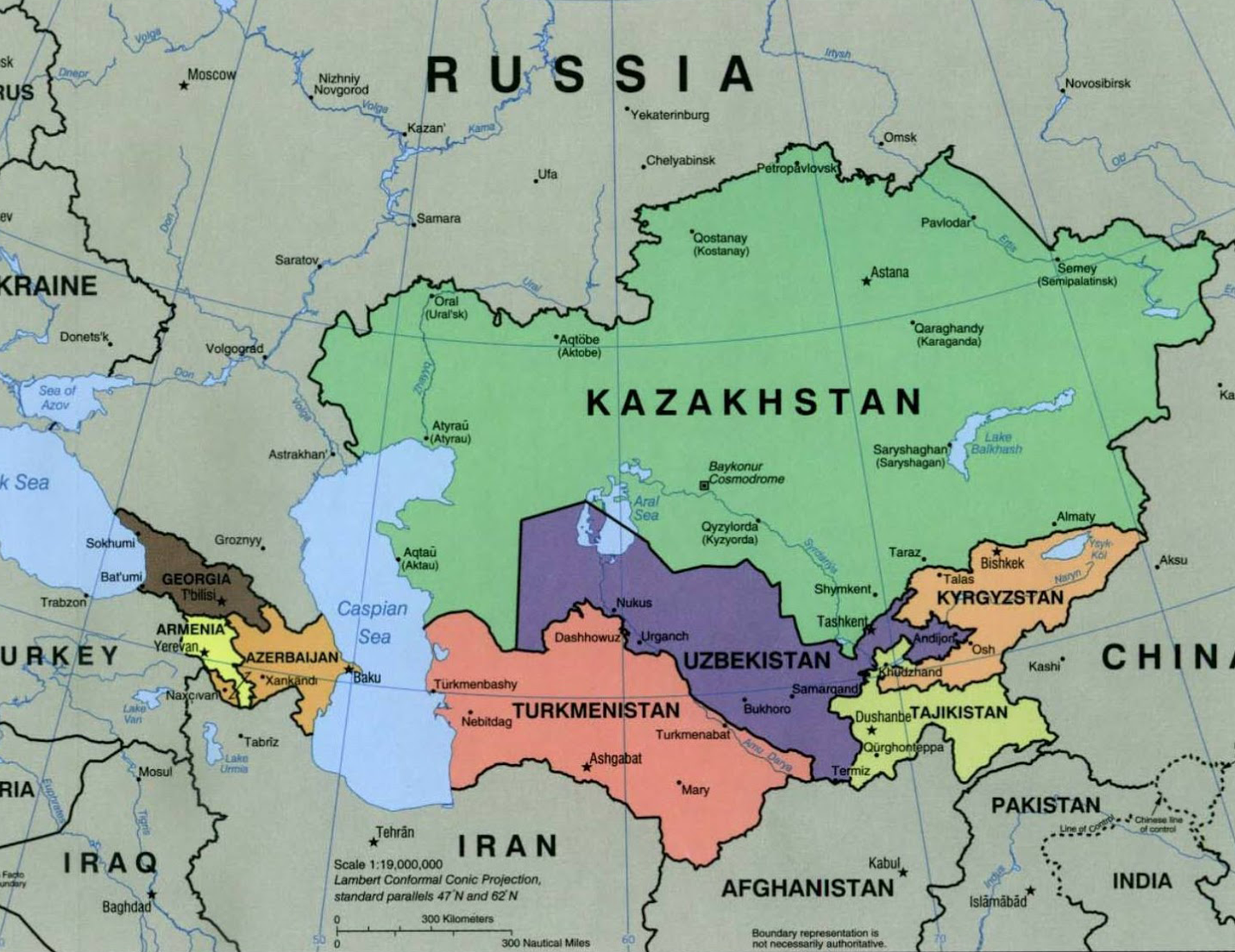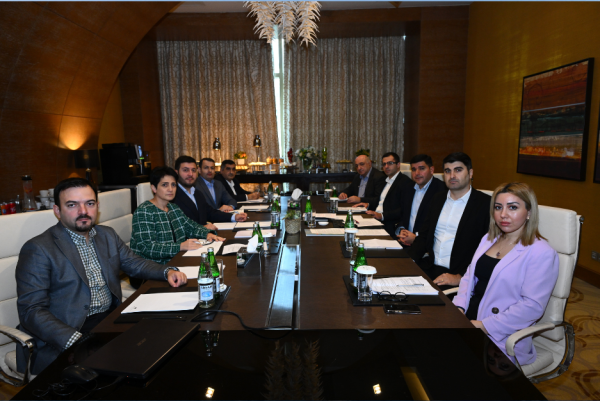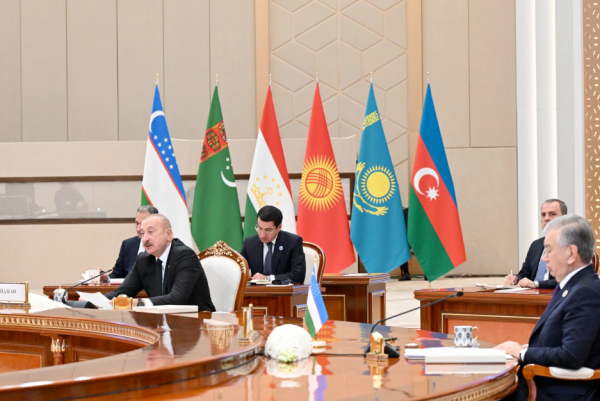Water security in Central Asia and the South Caucasus

For the countries of Central Asia and the South Caucasus, where agriculture accounts for 60-90% of total water consumption, water security is no longer just a resource issue—it is a matter of economic resilience and political stability.
During the Soviet era, water management in Central Asia and the South Caucasus was centralized under Moscow, which controlled the allocation of water resources and established irrigation and hydroelectric systems to support large-scale agricultural production. Since the system created by Moscow focused on short-term gains it left behind environmental degradation and disrupted management systems, while climate change has exacerbated these problems.
The Soviet Union’s dissolution in 1991 fragmented once-unified water systems, forcing newly independent states to confront water scarcity without regional frameworks. The two regions faced similar dilemmas: how to manage transboundary rivers, balance agricultural demands with hydropower, and navigate political tensions with upstream and downstream neighbours. However, as cooperation proved elusive, the struggle over water became a defining aspect of their post-Soviet realities. Now, water is not only the foundation of life but also a potential source of conflict.
Central Asia
The Amu Darya and Syr Darya rivers, which sustain the Aral Sea basin, are the lifeblood of Central Asia. Under Soviet rule, these rivers powered vast irrigation networks for cotton production and supported large-scale hydropower plants. However, the system was designed with little regard for sustainability. The result was environmental devastation: the Aral Sea, once the world’s fourth-largest inland lake, shrank by 90%, becoming one of the worst ecological disasters of the 20th century. Today, annual economic losses from desertification around the former Aral Sea exceed $1.25 billion.
After independence, hopes for more efficient water management were short-lived. Rapid population growth, rising energy demands, and climate change have strained water systems across the region. In the 1990s, the population stood at 25 million; today, it exceeds 82 million, which increases water demand for agriculture and energy.
Kyrgyzstan and Tajikistan, home to the sources of Central Asia’s main rivers, hold abundant water but struggle with energy shortages. In winter, water stored for irrigation becomes crucial for hydropower and leaves both vulnerable to electricity shortages. Kyrgyzstan, despite being water-rich, declared an energy emergency in 2023 due to insufficient water for hydropower.
Meanwhile, Uzbekistan, a cotton-producing giant, faces severe water scarcity, with only 12.2 cubic kilometres of water originating within its borders. Dependent on water from Kyrgyzstan and Tajikistan, Uzbekistan must navigate declining water availability as its population nears 40 million. Forecasts predict that water shortages will increase from 14% to 46% by 2030, which will threaten agricultural output and economic stability.
Kazakhstan is in a similar situation. With two-thirds of its territory classified as arid or semi-arid, Kazakhstan relies heavily on water flowing from Kyrgyzstan and Uzbekistan. Although the country has invested in water management reforms, the sustainability of its resources remains in question.
Turkmenistan, nearly entirely dependent on the Amu Darya, struggles with inefficient irrigation systems and dwindling river flows, with its agricultural sector – and food security – at risk.
Many water-sharing agreements are relics from the Soviet era, ill-suited for today’s realities. A barter system for water management, inherited from the Soviet era, still exists but faces significant challenges. Under this arrangement, upstream Kyrgyzstan and Tajikistan release water during the growing season for downstream Kazakhstan, Uzbekistan, and Turkmenistan. In exchange, these downstream states provide fuel, electricity, and financial aid. However, this system is under strain.
The primary issue is that water has become increasingly weaponized and securitized. Climate change and local needs have forced upstream countries to retain more water for their hydropower and energy needs. Simultaneously, water management has evolved from being a purely technical matter to a politically sensitive one and made cooperation more difficult. Trust is declining, and water is increasingly being viewed through the lens of national security.
There is also growing disagreement over how the barter system should be structured going forward. Kazakhstan and Uzbekistan seek to preserve the old system, as it aligned with Soviet-era priorities when their agricultural sectors were given preference. In contrast, Kyrgyzstan and Tajikistan argue that the arrangement no longer reflects their energy needs, and they demand new terms that better address their evolving priorities. This clash complicates efforts to renegotiate water-sharing frameworks, with each side unwilling to compromise easily.
Another issue is the construction of Afghanistan’s Kush-Tepe Canal, expected to divert water from the Amu Darya by 2028. With water becoming scarcer, regional tensions could escalate unless a more sustainable framework for cooperation is reached.
South Caucasus
Similarly to Central Asia, the South Caucasus is heavily reliant on transboundary rivers, such as the Kura, Araks, Alazani, and Khrami rivers. These rivers are essential for agriculture, hydropower, and domestic use.
During the Soviet era, large-scale irrigation systems supported intensive agricultural production in Azerbaijan and Georgia. Hydropower plants built along the region’s rivers supplied electricity to growing urban centres. However, Soviet water management was mostly focused on short-term gains, which resulted in environmental degradation and water pollution, which persist to this day. In turn, after the collapse of the Soviet Union Armenia, Azerbaijan, and Georgia`s efforts to establish new frameworks for regional cooperation since then have been slow.
Currently, around 70-75% of Azerbaijan`s resources depend on upstream sources from Armenia and Georgia. This reliance makes the country extremely vulnerable to shifts in river flow caused by climate change or political developments. Before the Second Karabakh War, Azerbaijan struggled with water security due to limited access to critical water sources controlled by Armenia. After the war, Azerbaijan regained control of several rivers, including the Tartar and the Ganja rivers, which are of high importance for irrigation and drinkable water. However, the absence of a peace agreement and uncertainty with Armenia continue to threaten long-term water security.
Azerbaijan also plans to expand hydropower to reduce natural gas consumption, but climate models predict huge reductions in river flows in the coming decades, which will pose risks to energy production. This could affect gas exports through the Southern Gas Corridor, which supplies energy to Europe.
Georgia’s rivers, including the Kura and Khrami, are essential for both agriculture and energy production. The country generates more than 80% of its electricity from hydropower. However, climate change is expected to significantly reduce river flows in the coming decades, which will create a serious risk to hydropower production.
Armenia, though less reliant on external water sources, faces its own set of challenges. Water quality is among the main concerns for the country. Industrial waste and mining runoff have led to pollution and consequently created tensions with downstream Georgia. Armenia also faces increased droughts, which endanger agricultural production and food security, especially in northern farming-centered regions. Both Armenia and Georgia are also heavily dependent on international donors and investment when it comes to water security issues.
Despite their shared reliance on the same rivers, Armenia, Azerbaijan, and Georgia have yet to sign any comprehensive water-sharing treaties. The Kura and Araks rivers, which flow through all three countries, are critical to the region’s agriculture and energy systems, but there is no multilateral agreement. Negotiations for a bilateral agreement between Azerbaijan and Georgia over the Kura River offer some hope for future cooperation, but progress has been slow. Without a concrete strategy, tensions over water security could escalate, especially during periods of drought or high demand.
Towards Cooperation or Deeper Conflict?
While the existing barter system in Central Asia still functions in some capacity, it is increasingly inadequate. A new barter framework must be developed to reflect today’s realities. However, reaching an agreement on the parameters of this new system is becoming more difficult. Climate change pushes upstream countries to retain more water for energy production, while downstream nations demand reliable water flows to maintain agricultural output. At the same time, the securitization of water complicates negotiations, as states are more inclined to treat water as a strategic asset rather than a shared resource.
In the South Caucasus, the situation is similarly complex. Armenia, Azerbaijan, and Georgia share several key rivers, but they have struggled to develop multilateral agreements. The Kura and Araks rivers, which flow across multiple borders, are critical for agriculture and energy, but without proper coordination, these shared resources could become sources of tension. The absence of a peace agreement between Armenia and Azerbaijan continues to threaten long-term water security, particularly as both countries compete for control over river access.
To overcome the challenges related to water, it is essential for Central Asia and the South Caucasus to take ownership of their shared water resources and build cooperation frameworks rooted in regional agencies. The only sustainable way forward lies in developing their own frameworks for cooperation – ones that respect the sovereignty of each state but also create some kind of interdependence.
The South Caucasus can play a complementary role in this process. While they are not directly linked to the Central Asian river systems, they share similar water challenges and possess expertise in managing cross-border resources, which could be exchanged through joint research programs and environmental cooperation platforms. For instance, Georgia’s experience in regional energy trade and hydropower could be relevant for Central Asia, while the South Caucasus could benefit from Central Asia’s expertise in large-scale irrigation. Through this, these two regions can contribute to each other’s progress in water security.
Although significant strides in cooperation have been made – such as the Middle Corridor – a regional framework that unites the South Caucasus and Central Asia under one institutional umbrella is still missing. The question now is how to unlock the full potential of these two regions and use their interconnectedness to address common challenges. Water, as both a lifeline and a potential flashpoint, lies at the heart of this shared future. Water has also the potential to become a cornerstone toward deeper regional integration and transform a historically contentious issue into a foundation for peace.
Now in both Central Asia and the South Caucasus, water remains a double-edged sword: it can spark conflicts or become a foundation for cooperation. The question is no longer whether water security is a priority – but whether these regions can transform it from a source of rivalry into a foundation for cooperation. In this regard, upcoming COP29 could offer a platform for these countries to discuss and come up with certain framework for coordination and cooperation.







